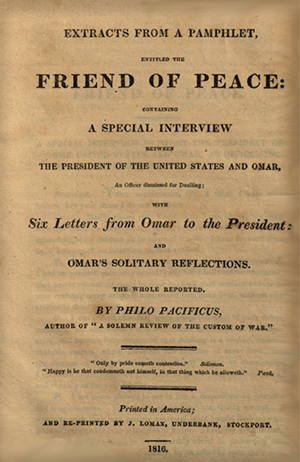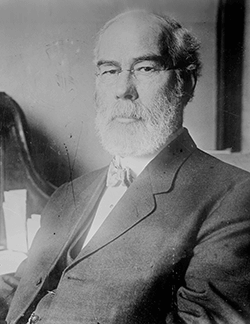Salem Peace Society
The Peace Testimony is probably the best known testimony of Friends. The belief that violence is wrong has persisted to this day, and many conscientious objectors, advocates of non-violence and anti-war activists are Friends.
 Quakers' original refusal to bear arms has been broadened to embrace protests and demonstrations in opposition to government policies of war and confrontations with others who bear arms, whatever the reason, in the support of peace and active nonviolence. Because of this core testimony, the Religious Society of Friends is considered one of the traditional peace churches.
Quakers' original refusal to bear arms has been broadened to embrace protests and demonstrations in opposition to government policies of war and confrontations with others who bear arms, whatever the reason, in the support of peace and active nonviolence. Because of this core testimony, the Religious Society of Friends is considered one of the traditional peace churches.
One of the earliest peace societies in the United States originated in Salem in 1819. Fifty-seven men, of whom thirty-nine were Quakers, met and organized the Salem Peace Society. Published minutes record its history from the active and hopeful beginning until the summer of 1826 when the minutes terminate. The first minutes from the meeting report a preliminary meeting, late in 1818 at the Quaker founders of the Blue River Meeting House. Copies of Friend of Peace were procured to be distributed to the members.
 Benjamin Franklin Trueblood, a descendant of one of these Quakers was for many years General Secretary of the American Peace Society and made many trips abroad in the interest of peace and international arbitration. The son of another (Barnabus Coffin Hobbs) in 1878 made a visit to St. Petersburg to lay before the Czar a memorial praying for exemption from military duty of all Russian subjects who had conscientious scruples against war, and urging upon the Czar the adoption of arbitration as a substitute for war.
Benjamin Franklin Trueblood, a descendant of one of these Quakers was for many years General Secretary of the American Peace Society and made many trips abroad in the interest of peace and international arbitration. The son of another (Barnabus Coffin Hobbs) in 1878 made a visit to St. Petersburg to lay before the Czar a memorial praying for exemption from military duty of all Russian subjects who had conscientious scruples against war, and urging upon the Czar the adoption of arbitration as a substitute for war.
Benjamin Franklin Trueblood was educated at Earlham, A. B., 1869, and A. M., 1875; State University of Iowa, LL.D., 1890. He also studied theology. He was a minister of the Society of Friends, and served as president of Wilmington, Ohio College, 1874-1879, and Penn College, Oskaloosa, Iowa, 1879-1890. He resided in France, 1890-1891.
In 1892, he became General Secretary of the American Peace Society, which post he retained until his retirement on May 7, 1915. He attended The Hague Peace Conference in 1899, and made many trips abroad in the interest of international arbitration and peace. He was a lecturer and writer on international subjects, and served as Editor of Advocate of Peace from 1892 to 1915. Author: The Federation of the World, 1897. Translator of Kant's Zum Ewigen Friedeu, 1897. He died on October 26, 1916.
On first thought it seems simply a happy accident that Benjamin F. Trueblood came from a tiny Hoosier community, bearing a name "Salem" which signifies "Peace," should contribute to the world, within a single decade, two such renowned pacifists as America's great peace-making Secretary of State, John Hay and the Western Hemisphere's most Statesman like Secretary of Peace in Benjamin F. Trueblood.
The Salem Peace Society was a relatively small and now little remembered venture, but it demonstrates the spirit and motivation of the men from the Blue River Quaker Settlement and their desire for peace and concord in the world.
The Historic Blue River Quaker Settlement was established in 1815

























